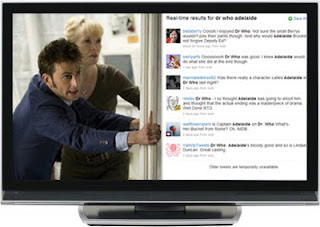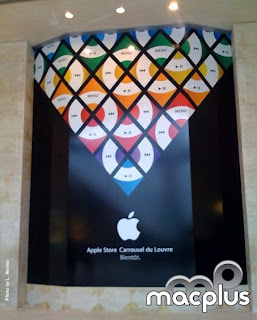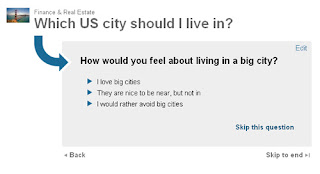Au commencement était Tim Berners-Lee. Il créa HTTP et le web. Mais il n'y avait pas shopping cart et le web était vide. Arriva Jeff Bezos et il dit: créons le e-commerce et le shopping cart en 1-click. Et le web généra des ventes et le monde retrouva son sens.
Il parait difficile d'imaginer le web sans e-commerce. Il a transformé un monde d'information en un monde d'e-commerce. Un nouveau changement est en train d'arriver sur le web et cette fois c'est une technologie qui l'amène.
Cette technologie c'est Ajax, ou Asynchronous JavaScript et XML et elle rend l'expérience des internautes beaucoup plus interactive et agréable en offrant la même rapidité qu'une desktop app.
C'est une bonne nouvelle pour les sites qui veulent améliorer l'expérience de leurs visiteurs: pensez Google Docs, Gmail, Meebo pour des exemples de sites qui utilisent Ajax.
Dans le monde de l'e-commerce, une meilleure expérience peut faire la différence entre un achat complété et un shopping cart abandonné.
Mais jusqu'à présent Ajax était un défi pour les développeurs. Même avec l'utilisation de frameworks, la tàche prenait beaucoup de temps. Maintenant l'Ajax sans code commence-t-à apparaître et devrait faciliter l'amélioration de l'expérience des visiteurs tout en facilitant la vie des développeurs.
[ENGLISH] The Groundbreaking Potential of Codeless Ajax
While a framework reduces the amount of "coding from scratch" that has to be done, developers still have to build all the pieces needed to tie all the components together, writes Alpha Software's Jim Dusoe. Frameworks represent less code, but they're not codeless. Codeless Ajax promises to free devs from the complexity, drudgery and time constraints associated with Ajax programming.
In the beginning, Tim Berners-Lee created HTTP and the Web. And the Web was without commerce, and void. And darkness was upon the face of retailers. And the spirit of commerce, Jeff Bezos, moved upon the face of the Web. And Bezos said, "Let there be electronic shopping carts, and one-click buying." And there were sales. And the computer gods saw the sales, and saw that it was good.
It's hard to imagine the Web without the electronic shopping cart. It was a seminal advance that transformed the Web from an information resource into a business platform. A fundamental shift is happening again, and this time, a programming technology is driving the change.
The technology is Ajax, or Asynchronous JavaScript and XML, and it's making the Web as engaging, interactive and, most important, as responsive as native desktop applications. Better still, Ajax does this without the deployment, management, or overhead costs associated with managing desktop environments.
That's good news for businesses looking to give their customers a better, more responsive online experience. Look no further than Google Docs, Gmail, Meebo, and Outlook Web Access for popular Web apps that get their mojo from Ajax.
Better app performance means a better user experience. In the world of e-commerce, that can be the difference between a sub-par user experience that leads to shopping cart abandonment, and a spectacular one that keeps people shopping and builds word-of-mouth referrals.
Real-World Benefits
For example, Ajax-powered e-commerce apps can allow shoppers to hover their mouse over a product to get a pop-up window with the product's details, including photos. There's no clicking, no data transfer, no page refreshing. The information is at customers' fingertips.
Applications with a database back end, such as inventory control, accounting or shopping carts, can respond with the same look, feel and functionality as non-Web desktop apps. Software updates are painless, requiring no effort on the part of users, desktop IT, or database administrators (a big plus).
However, while Ajax is a win for users and marketers, it has a dark side for developers. It's an entirely new way to code applications, and the learning curve is steep. Compared to other programming paradigms, many more lines of JavaScript and other code must be produced, tested, debugged and maintained for Ajax apps to function.
As with all programming languages, Ajax has its advantages and disadvantages. For example, even skilled developers have built Ajax apps that -- due to their asynchronous nature -- end up overloading servers or bogging down databases.
For database-driven apps (meaning, all e-commerce apps), many Ajax development tools pose problems when dealing with updates. Typically, developers have to refresh the entire database, pull up all affected forms (screens), update each form's logic, rewrite the layout code, and test the changes before redeployment is possible.
Back to the Future
Tools vendors faced similar challenges in the GUI (graphical user interface) and client-server eras. The first graphical Mac and Windows applications required coding line-by-line in C++, Pascal, or (gasp) assembler, coupled with a masterful knowledge of the operating system's primitives and, later, application programming interface.
The vendors responded with visual RAD tools that generalized common application requirements, such as creating windows, buttons and menus; connecting, reading and writing database records; accessing network resources; and so on. This allowed developers to focus on the core business logic they needed to encapsulate in their applications, and left the UI and resource utilization details to the programming platform.
The result: Developer productivity skyrocketed, along with the sheer number of custom-built business applications. Who among us hasn't fielded an application built in tools such as Visual Basic, Delphi, FoxPro, Alpha Five, FileMaker, Paradox and the like?
Now the era of "codeless Ajax" is upon us. In general, codeless Ajax promises to free developers from the complexity, drudgery and time constraints associated with Ajax programming. Several vendors are now talking about or offering technologies that provide some level of codeless Ajax functionality.
The scope of these offerings differs. Most nibble around the edges and provide some sort of reusable widgetry that makes it possible to create, say, an interactive pop-up window or application grid. Anything more sophisticated, however -- such as complex "parent-child" relationships like you would see in an invoice or sales order, or the components of a contact management system with extensive report filtering -- requires significant manual coding.
Framing the Frameworks
Some provide reusable frameworks that attempt to solve a broad range of programming problems in an Ajax namespace. Several of these frameworks are very good and highly evolved. Some focus on the GUI. Some focus on server-side components. Some do both.
The problem is, they're frameworks. Adopting a framework simply replaces the basic Ajax learning curve with a higher-level learning curve. Developers still have to learn the framework's namespaces, objects, components, conventions, patterns and so on.
When the vendor deprecates some aspect of the framework, apps built on it will require updating or risk breaking. Moreover, frameworks still require developers to build portions of their applications by hand, often line by line, using a 4GL.
So, while a framework reduces the amount of "coding from scratch" that has to be done, we still have to build (and debug) all the pieces needed to tie all the components together and use them. In other words, we're still not focusing efficiently on building business logic, but rather burning productivity cycles building the plumbing and the GUI.
In my opinion, frameworks are "less code," but they're not "codeless." I've been waiting for a platform that treats Ajax functionality the same way desktop RAD tools treat desktop functionality; that is, largely or entirely codeless. I know I'm not alone.
Codeless Ajax doesn't mean one size fits all. The tool should provide extensive customization capabilities. These could be based, for example, on properties pages that can be set by developers with a few mouse clicks, as opposed to having to grind out custom code for every desired behavior.
Ajax: The Next Generation
Using codeless Ajax, developers don't have to be JavaScript or XML gurus to create polished Ajax apps. The GUIs are created visually, and the code to manage asynchronous presentation and database operations is generated, optimized and maintained automatically.
I estimate that eliminating manual Ajax coding can cut my development time by 40 to 50 percent. Based on the pre-betas I have seen (and am providing feedback on), anyone with a modicum of development skill and experience will be able to use this tool to create online solutions that look, feel and behave with the same quality we expect of an enterprise app.
That's a game changer. Try that with ASP.Net, Flash, Ruby on Rails, Perl, PHP or pretty much any other application development environment today. Contemporary development platforms have become squarely focused on professional developers, cutting out the entrepreneur, the small business, or the penny-pinching mid-sized organization.
Codeless Ajax could be the breakthrough that, like earlier generations of RAD technology, changes this equation.
Source: Jim Dusoe
TechNewsWorld



 I think that Twitter made a great move by changing their tag line. I doubt that three years ago they were foreseeing that they had created an information network. Projections are that there will be 18 million users by 2010, that's about 12% of internet users.
I think that Twitter made a great move by changing their tag line. I doubt that three years ago they were foreseeing that they had created an information network. Projections are that there will be 18 million users by 2010, that's about 12% of internet users. 








 Twitter n'est pas le seul service de microblogging/messaging qui existe sur le web. C'est simplement le seul que les internautes utilisent.
Twitter n'est pas le seul service de microblogging/messaging qui existe sur le web. C'est simplement le seul que les internautes utilisent.
 Liste complète ici
Liste complète ici



 [ENGLISH] Wikirank is a nifty analytics tool that tracks trending topics on the world’s largest online encyclopedia, displays the 10 most read articles in the last 30 days, and gives users the ability to compare stats for up to four different topics.
[ENGLISH] Wikirank is a nifty analytics tool that tracks trending topics on the world’s largest online encyclopedia, displays the 10 most read articles in the last 30 days, and gives users the ability to compare stats for up to four different topics.
 Caterina Fake, la co-fondatrice de Flickr, vient d'annoncer sa nouvelle startup: Hunch (intuition), un agent de recommandation qui espère bien tourner l'indécision en bénéfices.
Caterina Fake, la co-fondatrice de Flickr, vient d'annoncer sa nouvelle startup: Hunch (intuition), un agent de recommandation qui espère bien tourner l'indécision en bénéfices.

 [ENGLISH] Thanks to Nathalie Magniez, Digital TV Marketing Consultant, and founder of Blooble.com to have informed us in the FrenchWeb.org group (LinkedIn) that all the presentations from DigiWorld 2008 (Montpellier, Octobre 2008) were available on Booble.
[ENGLISH] Thanks to Nathalie Magniez, Digital TV Marketing Consultant, and founder of Blooble.com to have informed us in the FrenchWeb.org group (LinkedIn) that all the presentations from DigiWorld 2008 (Montpellier, Octobre 2008) were available on Booble.
 Source: ReBrand.com
Source: ReBrand.com







